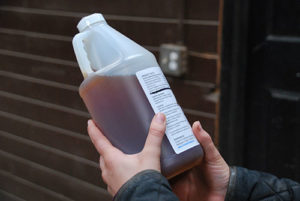Natural Horse Farm Insect (and Pest) Control
What eats 600 mosquitoes an hour? Find out and get more tips for protecting your horse from disease-spreading insects and pests!
- Topics: Basic Care, Farm and Barn, Insect Control, Slideshow
Share
ADVERTISEMENT
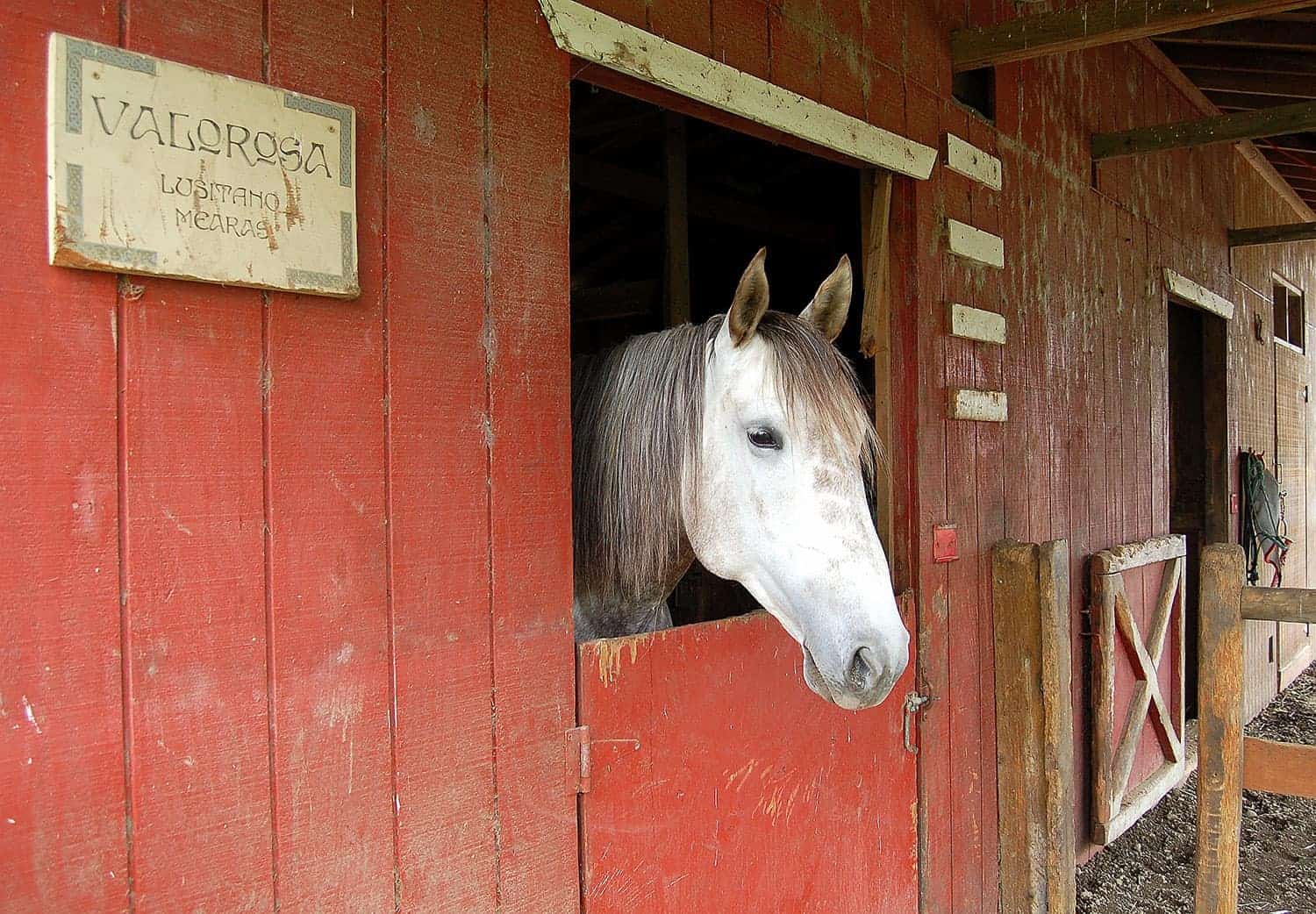
Natural Pest Control for Horse Farms
As horse owners, we often wrongly believe we're destined to "put up" with flies and pests. But happily, there are many ways we can reduce their numbers with techniques that are less harsh and often in concert with the natural world around us. Here are a few tips for pest control that will help you reduce chemical use, enhance the environment around us, and improve your horse's health. | Photo: Alayne Blickle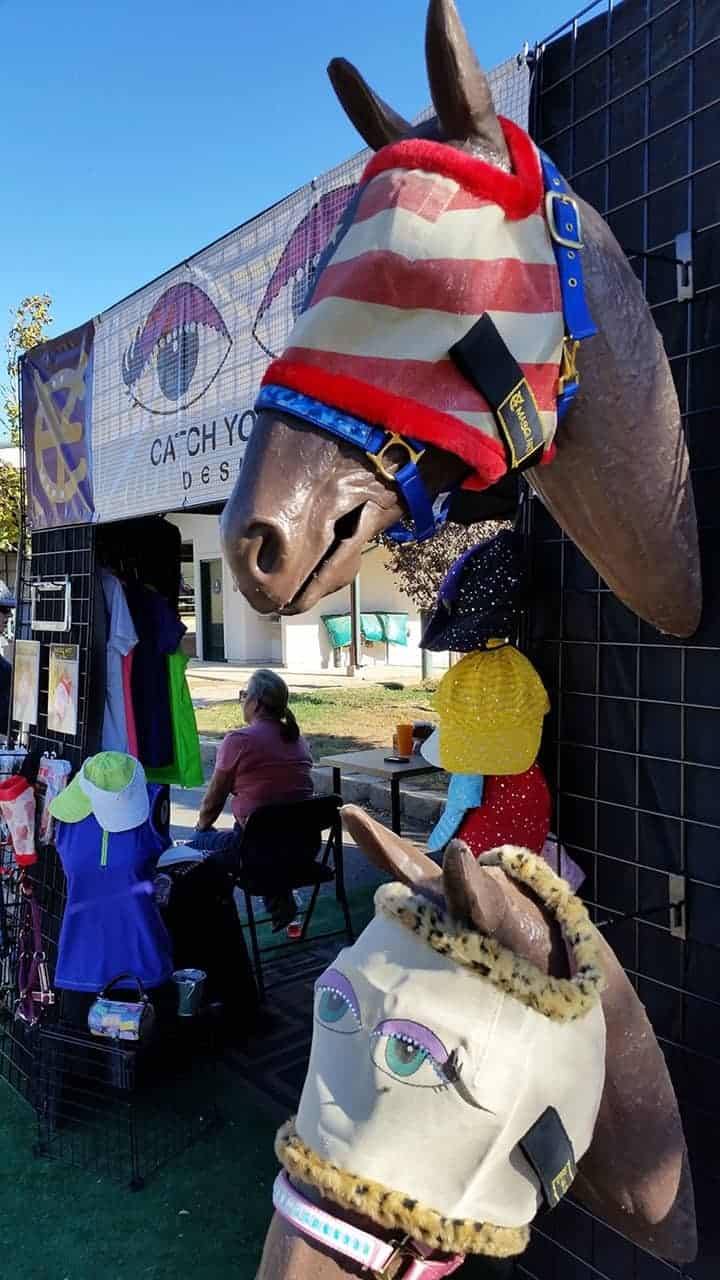
Physical Barriers
Physical barriers such as screens, fly sheets, and fly masks help prevent painful horse and deer fly bites. Most horses appreciate the relief that these physical barriers provide. A fan inside your horse’s stall can also be helpful since many insects are weak fliers and avoid air movement. | Photo: Alayne Blickle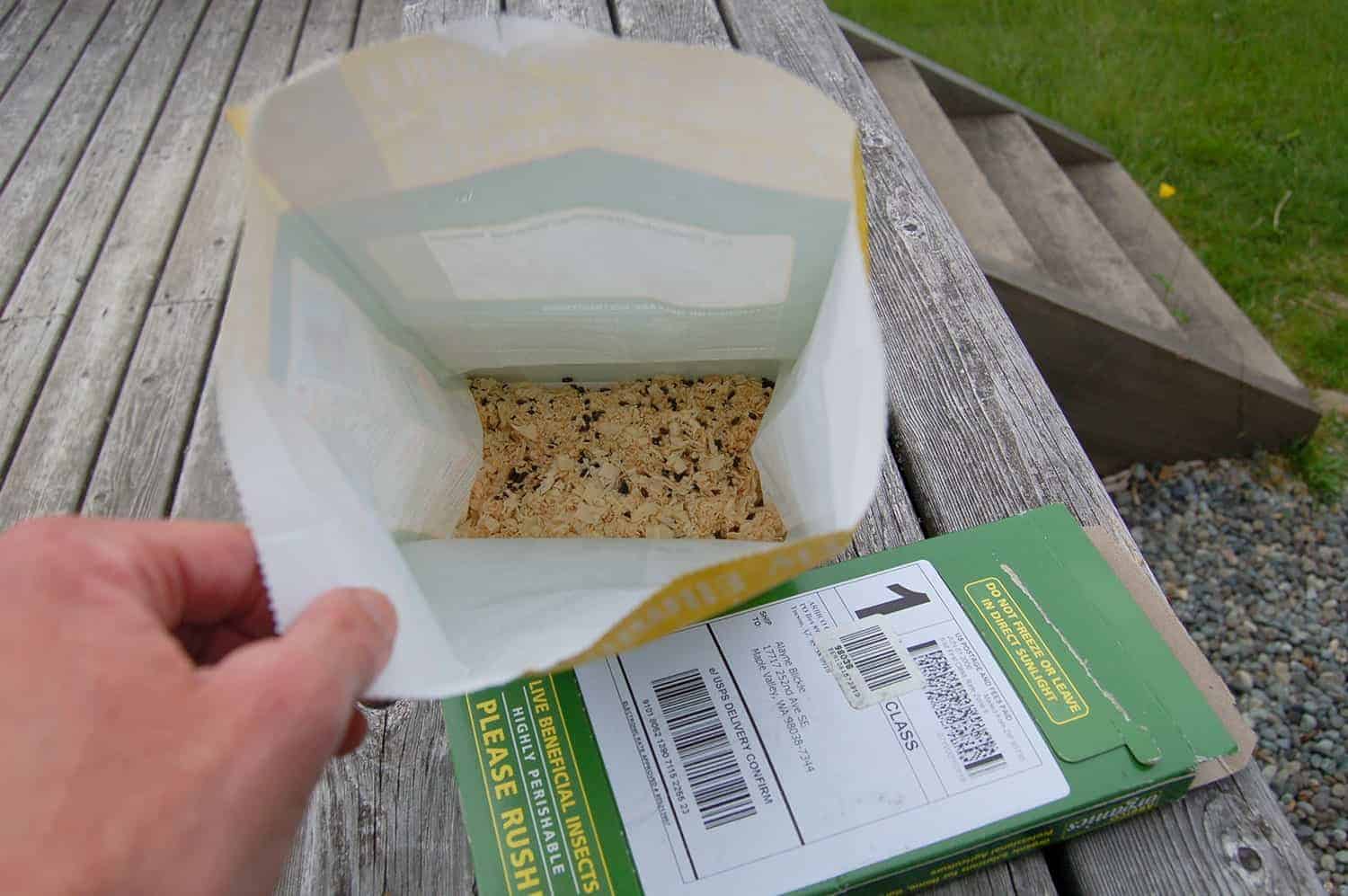
Fly Parasites
Gnat-sized fly parasites are wonderful biological controls for flies. These stingless, nocturnal wasps lay eggs in the developing pupae of flies, destroying the fly and thereby reducing the fly population. They don’t harm humans or animals in any way. In fact, you might not even notice their presence. Be sure to begin using fly predators before the fly cycle gets out of hand. | Photo: Alayne Blickle
Encourage Insect-Eating Birds
Encourage insect-eating birds to move onto your property to reduce the flying insect population. Swallows are a tremendous asset to horse properties. One adult swallow consumes thousands of soft-bodied flying insects per day—that’s better than a bug zapper and safer than insecticide! Consult your local Audubon chapter, birding organization, extension office, or the library to discover the right kind of swallow houses for your area. | Photo: Alayne Blickle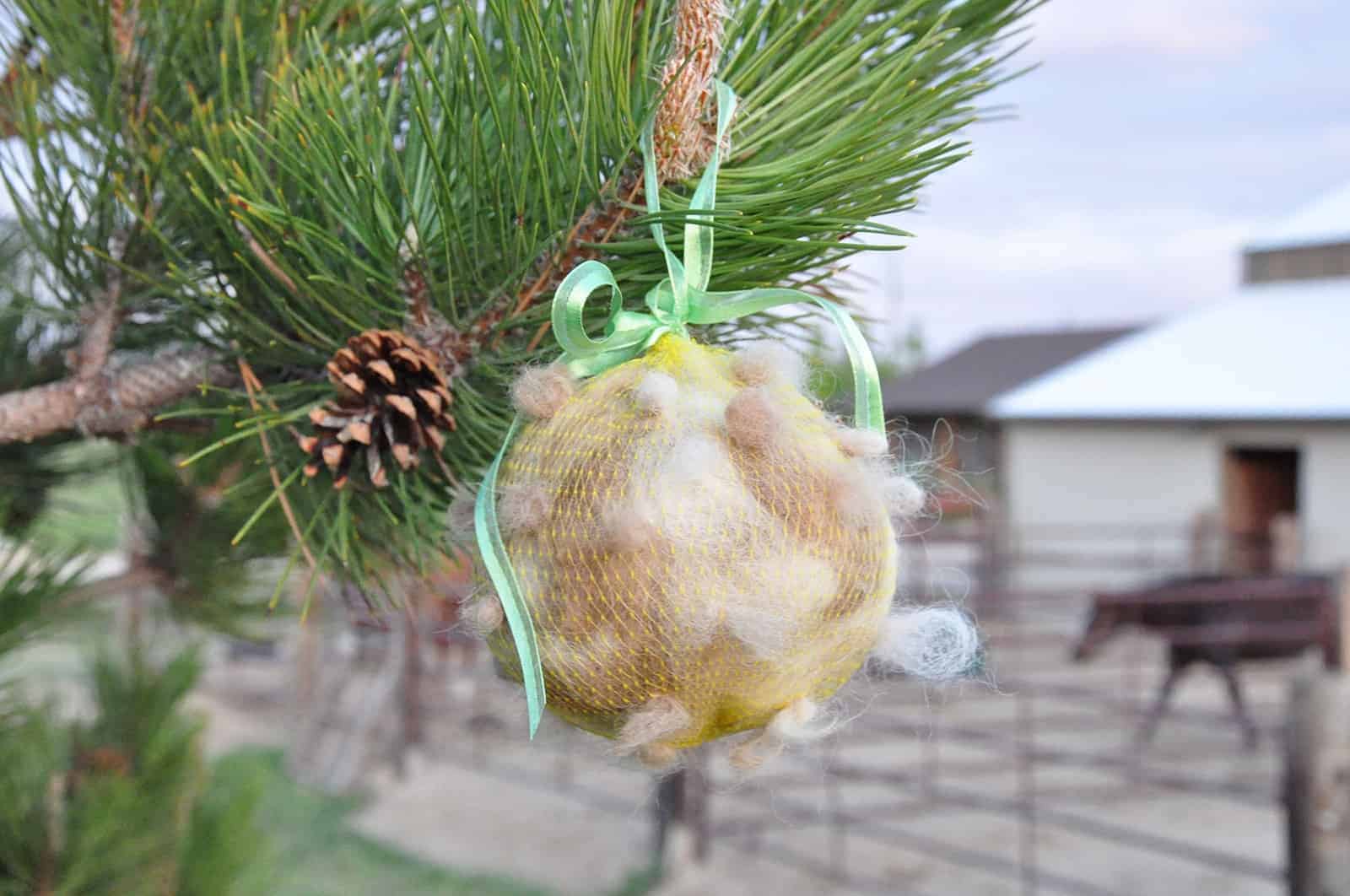
Collect Horse Hair for Swallows
Come spring and summer, you might see violet-green and tree swallows diving and darting on horse farms throughout North American horse farms. In the spring, collect horse, dog, or llama hair and set it out in tuffs, then sit back and watch the antics as these swallows swoop and dart to snatch up bits as nesting material. | Photo: Alayne Blickle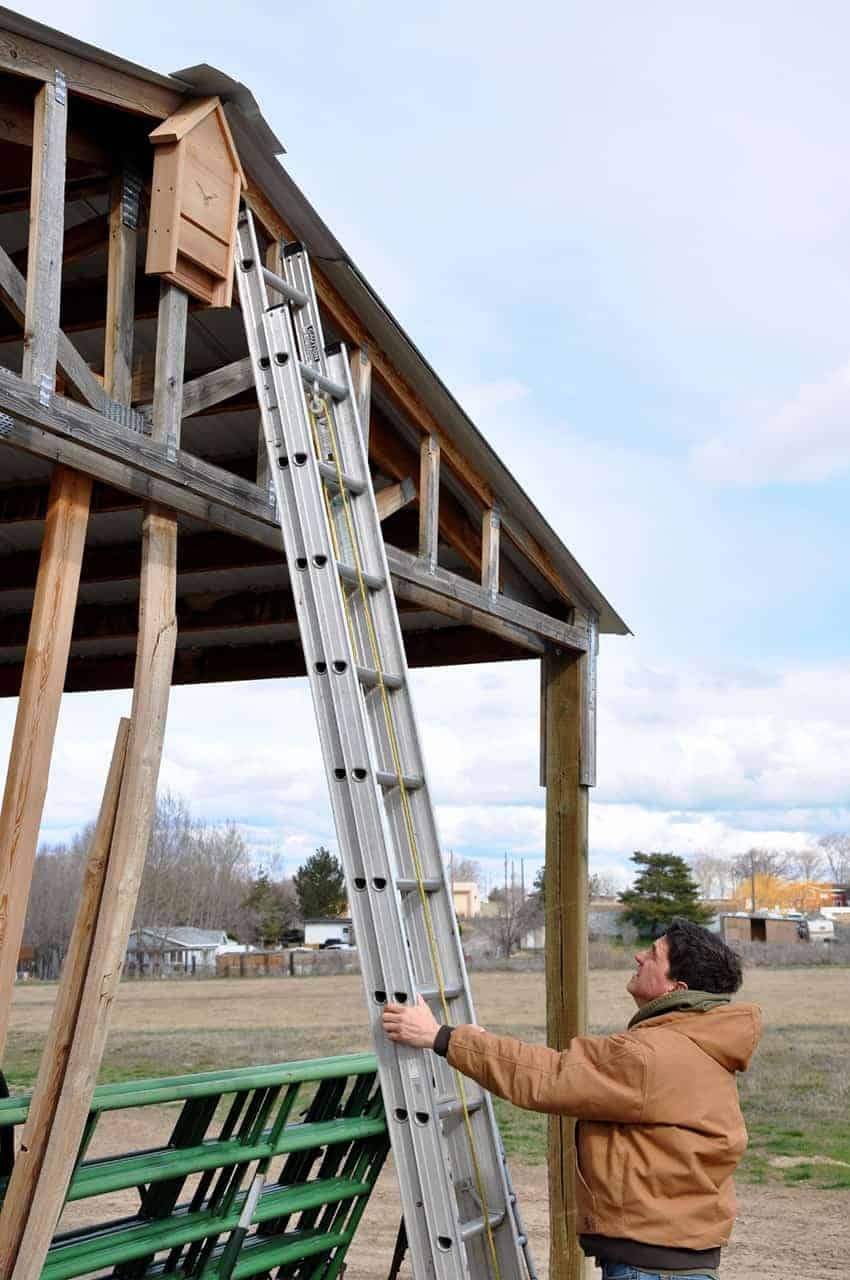
Encourage Bats Near Your Barn
One way to reduce nocturnal insect populations is to encourage bats to take up residence nearby. Bats play an important part in every healthy environment by consuming nocturnal flying insects that plague our horses and us at night, such as mosquitoes. One bat reportedly can consume 600 or more mosquitoes per hour! | Photo: Alayne Blickle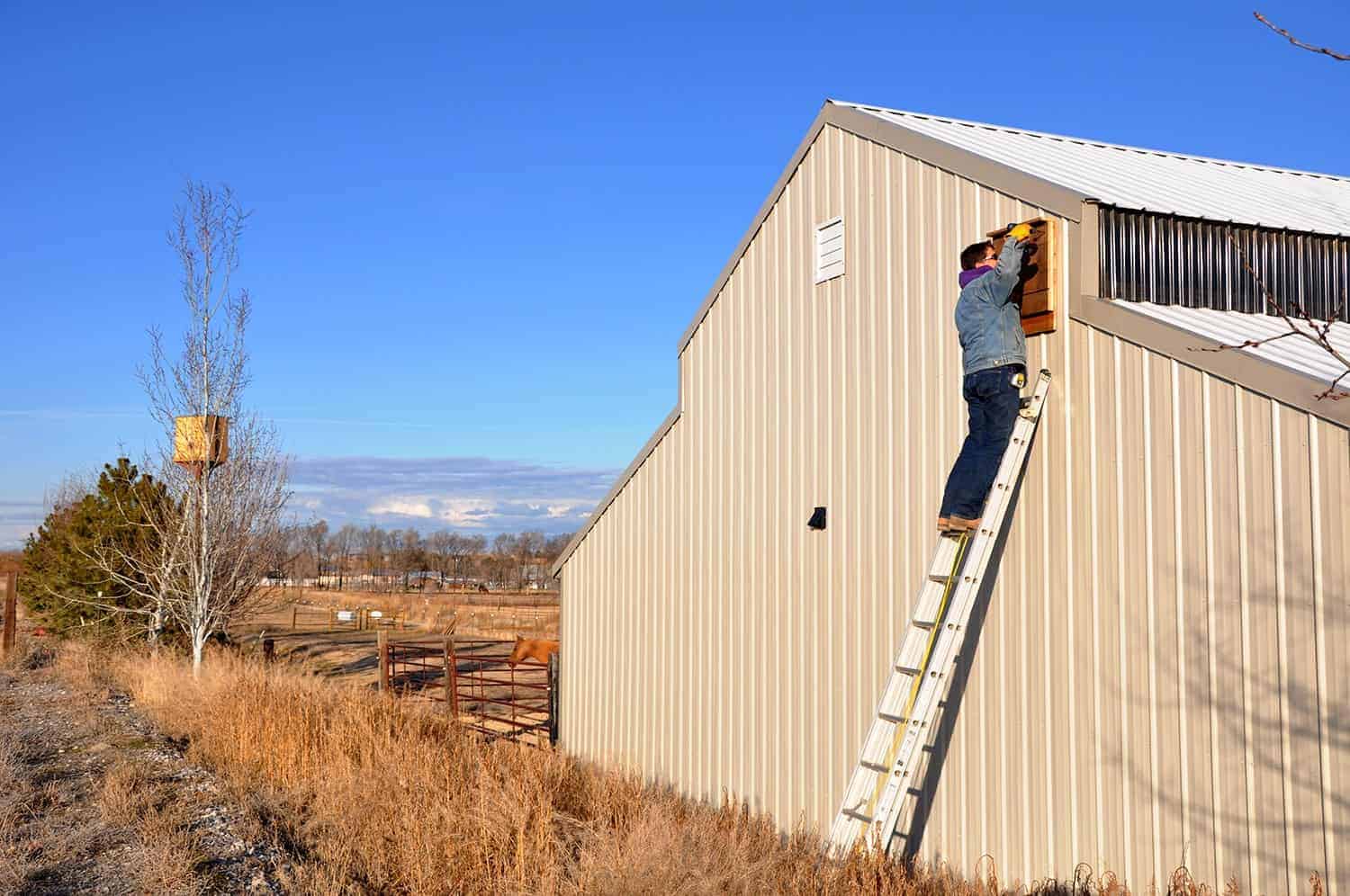
Where to Place Bat Boxes
Place bat houses on a barn, pole, tree, or house. The best habitat for bats is within a half mile of a stream, lake, or wetland. Bat houses need to be placed by early April, and it can take up to two years for a bat colony to find your house. Order bat boxes online or check the library or internet for resources on how to build bat houses. | Photo: Alayne Blickle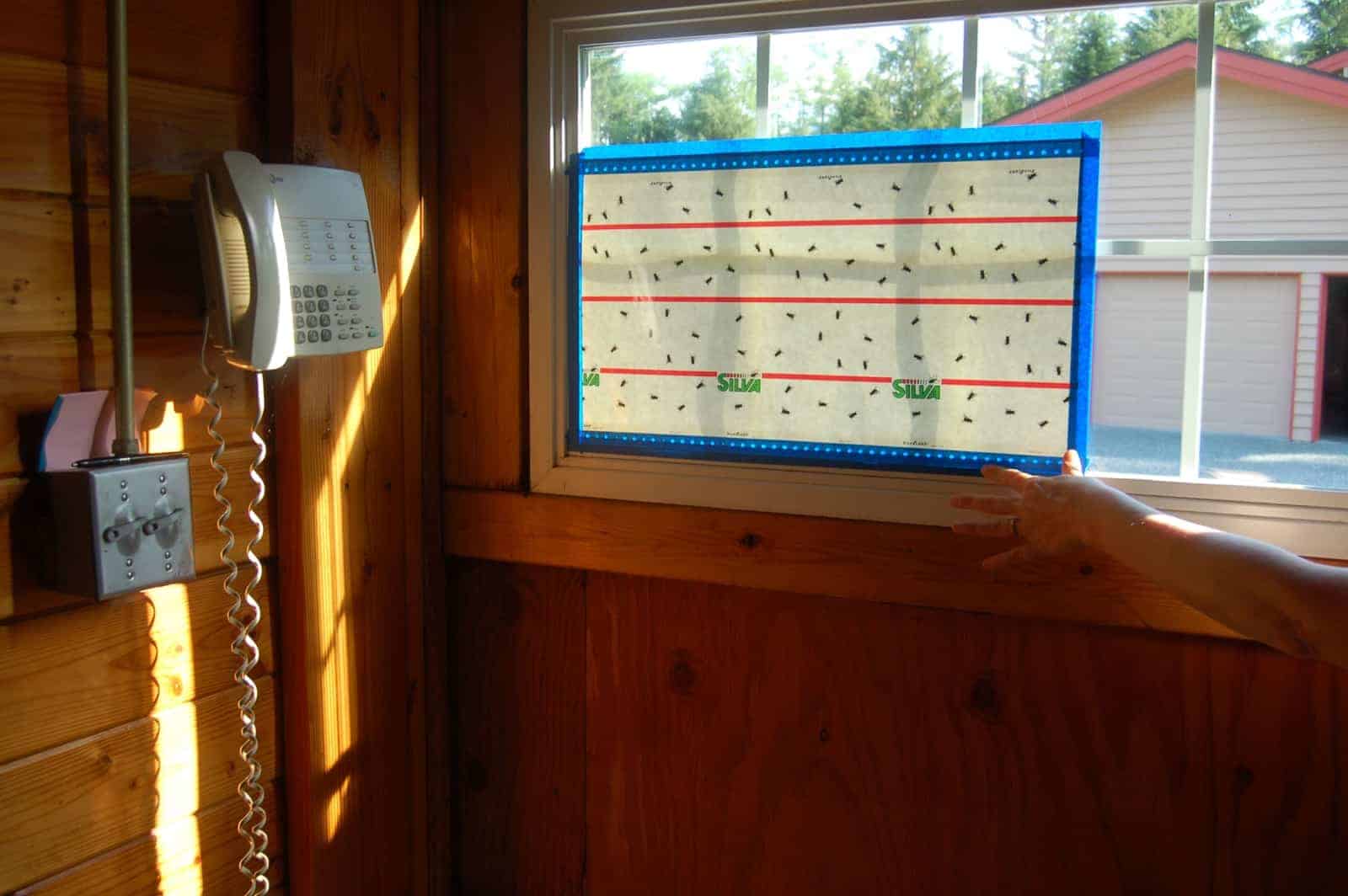
Noninsecticidal Traps: Fly Paper or Tape
The market offers several types of simple, noninsecticidal traps for reducing flying insect populations. One of the cheapest and easiest is fly paper or tape. This is the old-fashioned type of coiled sticky tape you uncoil and attach to the ceiling. | Photo: Alayne Blickle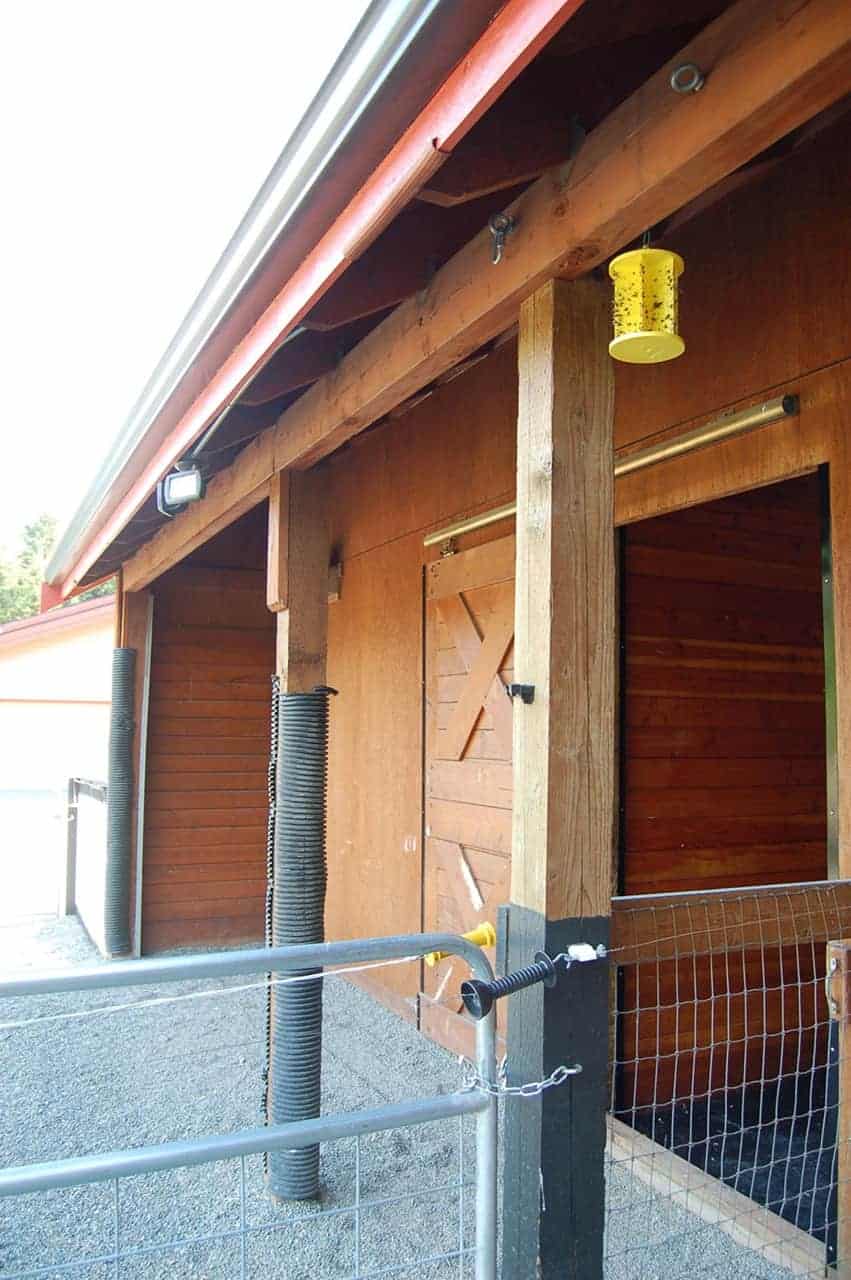
Noninsecticidal Traps: Sticky Fly Traps
Other kinds of sticky traps include brightly colored (which attract flies), hanging sticky tubes. Some of these traps have an attractant (an embedded scent), which flies seek out. Choose locations carefully so sticky traps are out of contact with human hair or swishing horse tails. | Photo: Alayne Blickle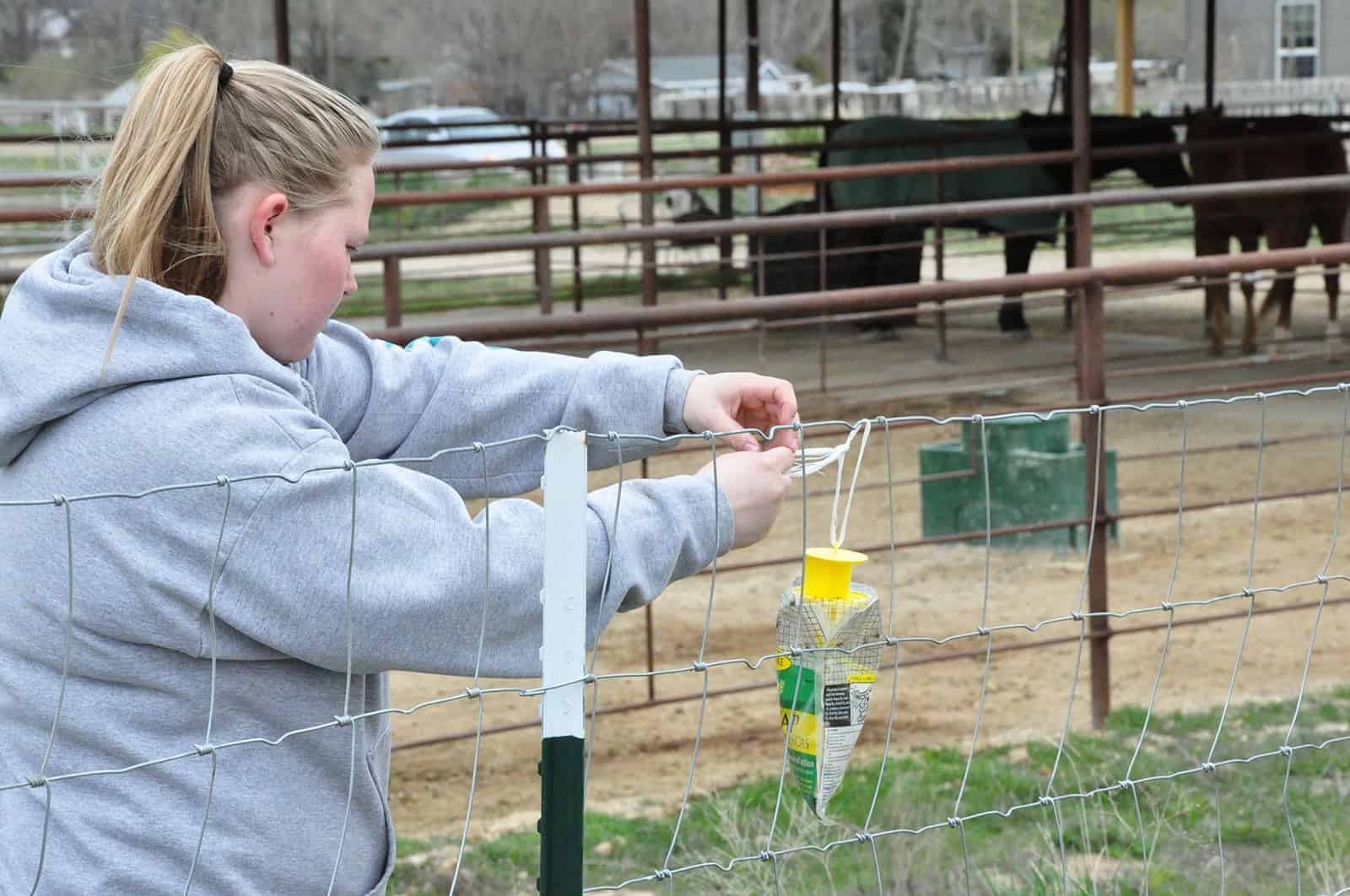
Pesticide-Free Bait Jars and Bags
Several commercial brands of pesticide-free bait jars and bags are available. These products contain a food attractant that activates when dissolved in water. Lured by the scent (and perhaps the color), flies enter the trap through the yellow cap top and drown in the water. Bags come ready to hang and use and are easy to dispose of when full. Place these traps away from your barn, so you don't attract flies toward your horses. These traps are smelly, which is another good reason to locate them away from barn areas. | Photo: Alayne Blickle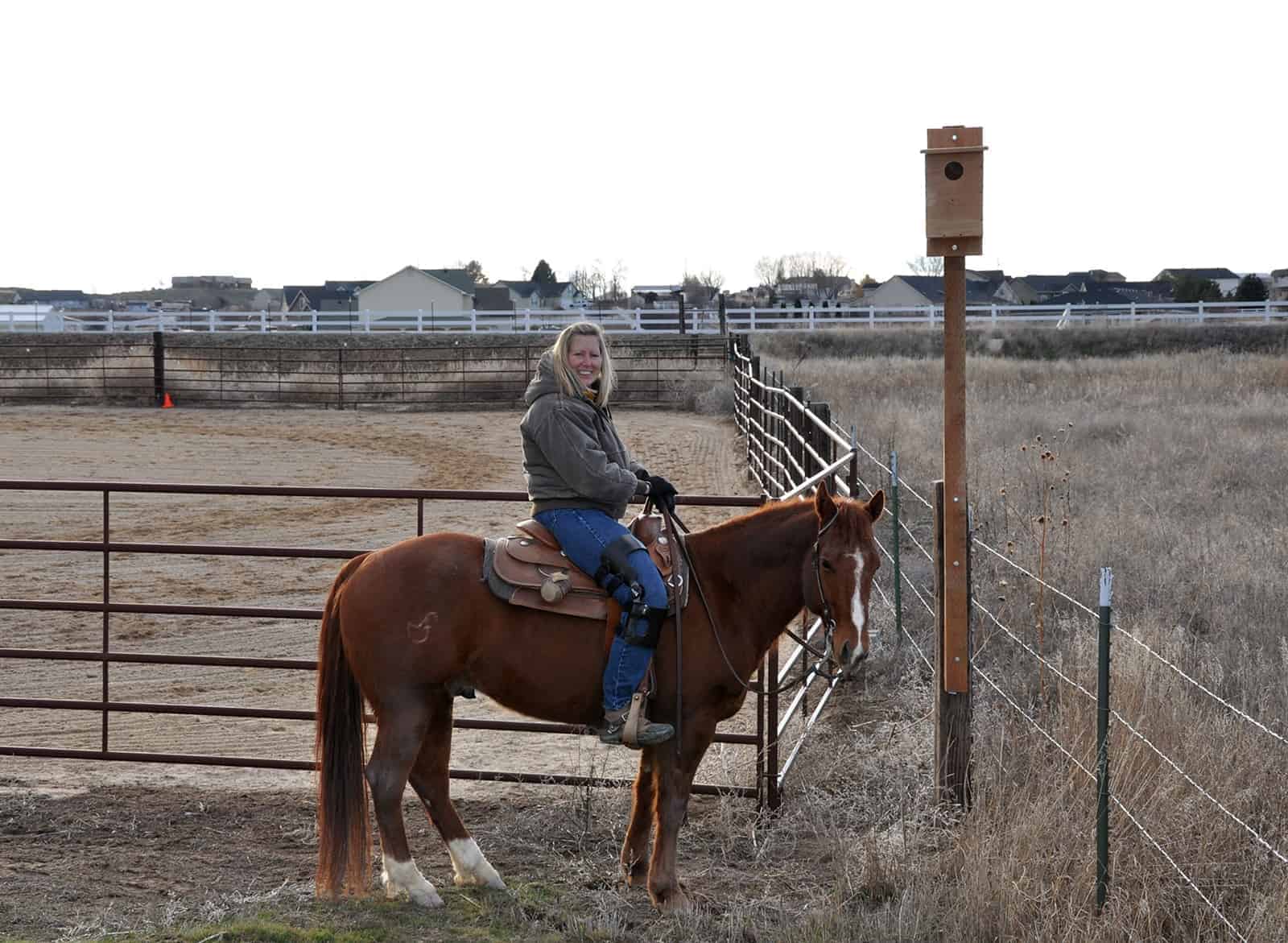
Secondary Cavity Nesters
American kestrels are secondary cavity nesters, which mean they nest in the hole someone else (usually a woodpecker) created. Secondary cavity nesters often have a difficult time finding dwellings, because people often cut down snags and old trees. Supplying a kestrel nest box is a great way to help the local population because they adapt easily to nest boxes. | Photo: Alayne Blickle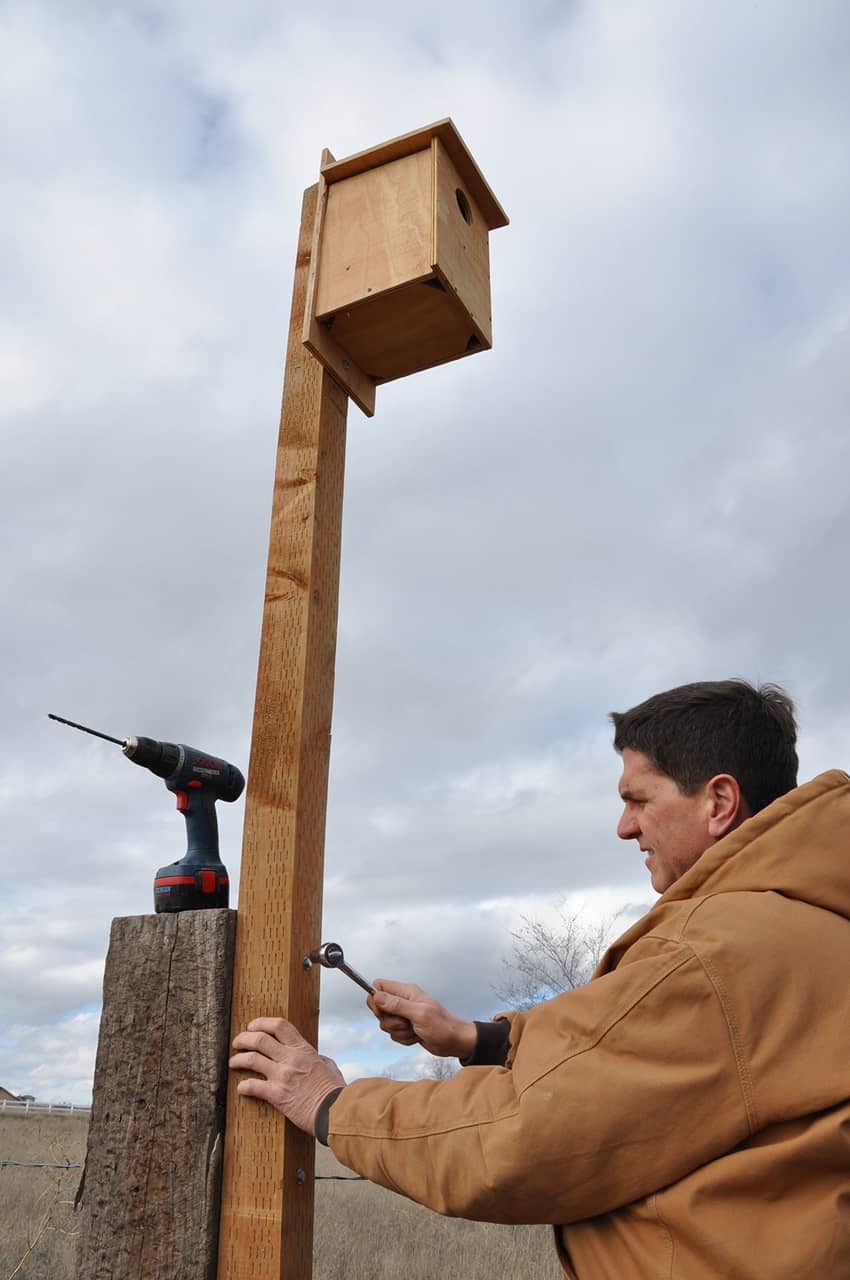
Kestral Nest Boxes
This small, robin-sized falcon primarily feeds on insects, such as grasshoppers and crickets, as well as small mammals, including mice, rats, shrews, gophers, and young ground squirrels. Hang kestrel nest boxes 8 to 20 feet off the ground, facing away from the prevailing weather and in an open area. | Photo: Alayne Blickle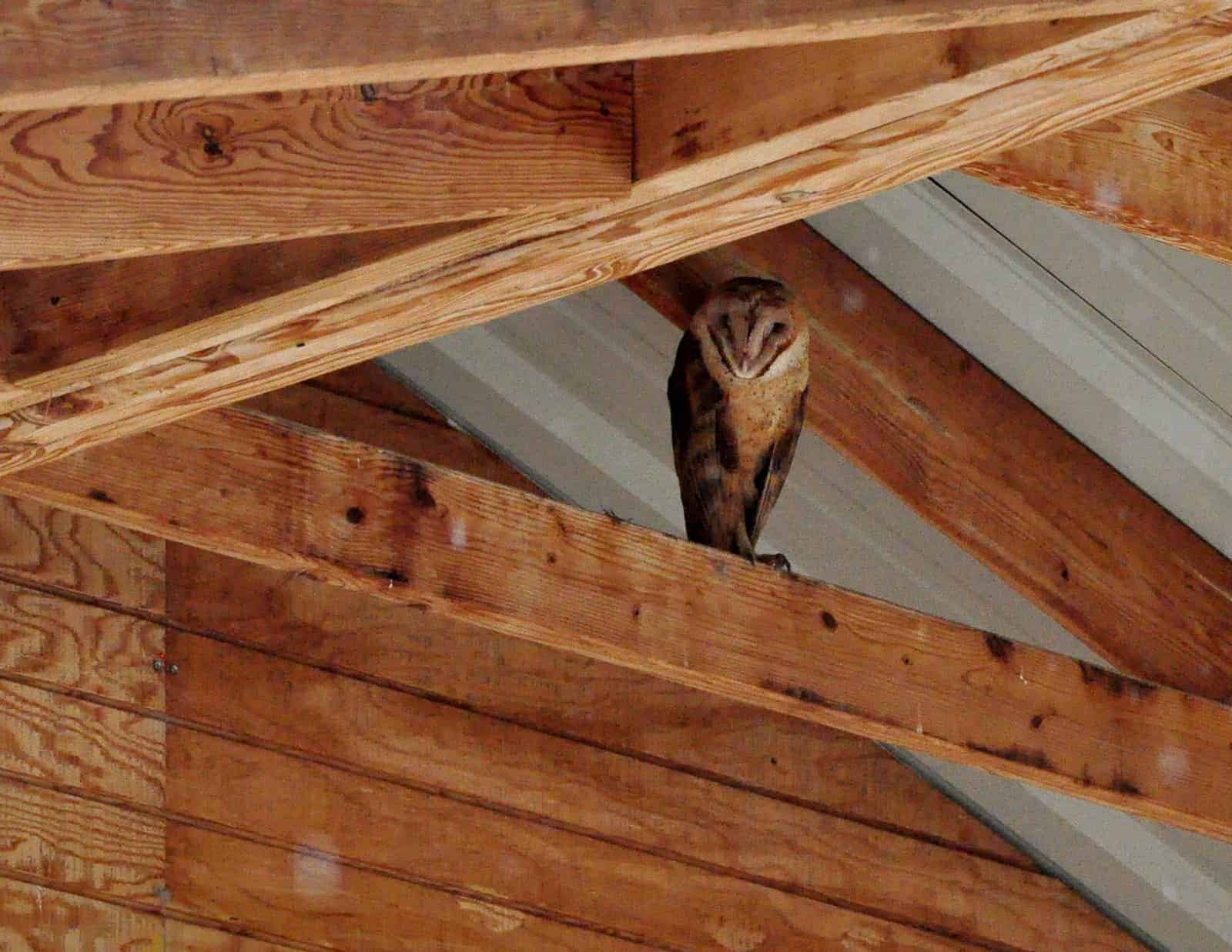
Barn Owls
Barn owls, which help with rodent control, can be a welcome addition to any horse property. In some agricultural parts of the country agencies install barn owl boxes on farms and ranches to act as year-around, chemical-free rodent control. | Photo: Alayne Blickle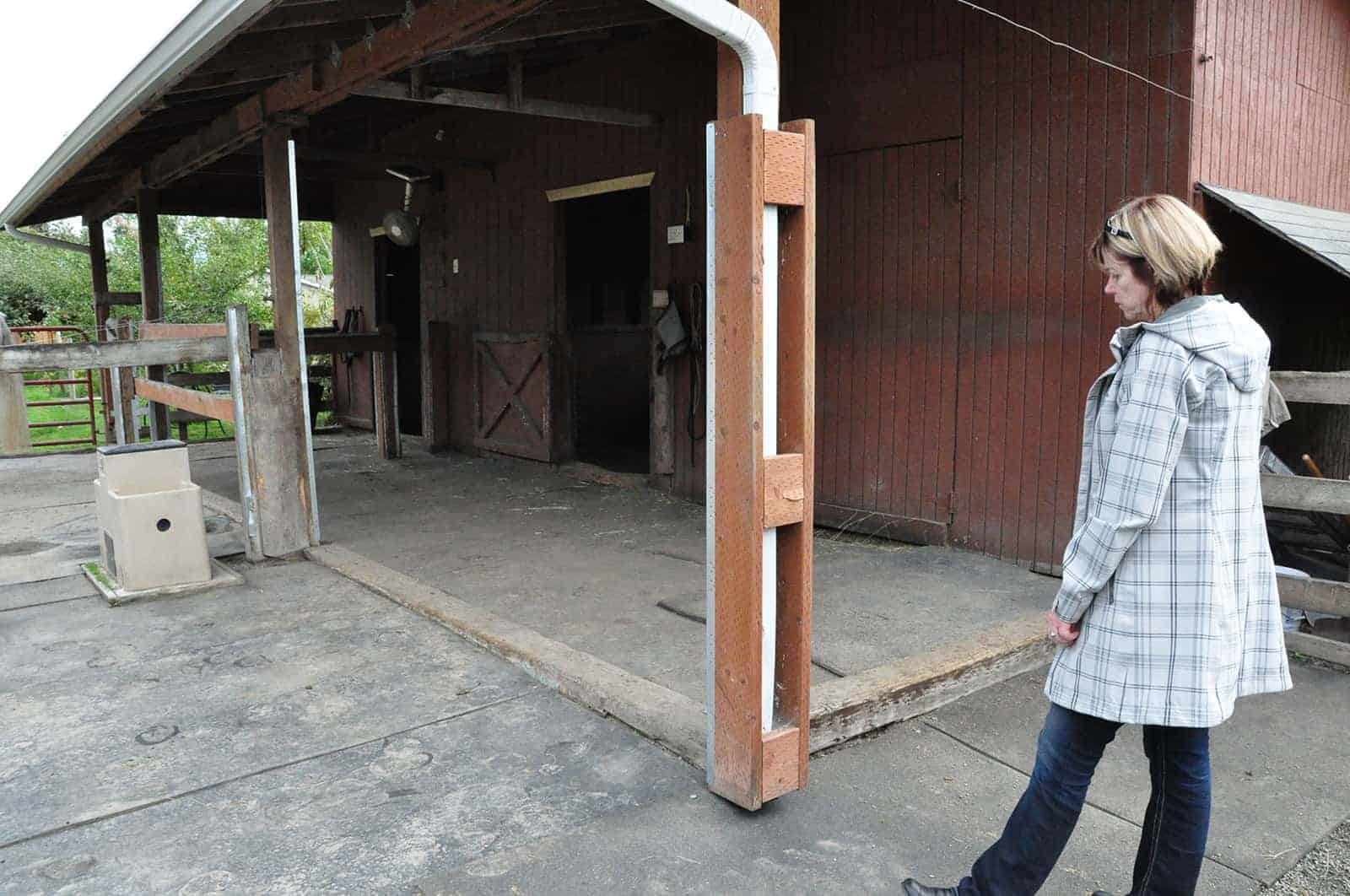
Reduce Insect Habitat
The key point to keep in mind when trying to manage insects is to strive to reduce insect habitat, where insects live and breed, such as the mud and manure. Flies lay their eggs in filth, so you can reduce their breeding grounds by regularly picking up manure, covering manure or compost piles, and eliminating mud. Make sure you have gutters and downspouts on all buildings to help reduce mud. | Photo: Alayne Blickle
Eliminate Sources of Standing Water
Mosquitoes need stagnant water to breed, so do everything you can to eliminate sources of standing water. If you have stock water tanks, birdbaths, or pet water bowls outside, change the water at least once a week—mosquito larvae need about 10 days to hatch. Also clean gutters regularly and remove empty flowerpots, old tires, or other containers where water accumulates. For ponds or other standing water bodies on your property, use mosquito dunks (Bacilllus thuringiensis, or Bt, a naturally occurring soil bacterium) to kill larvae. These dunks are harmless to wildlife. | Photo: Alayne Blickle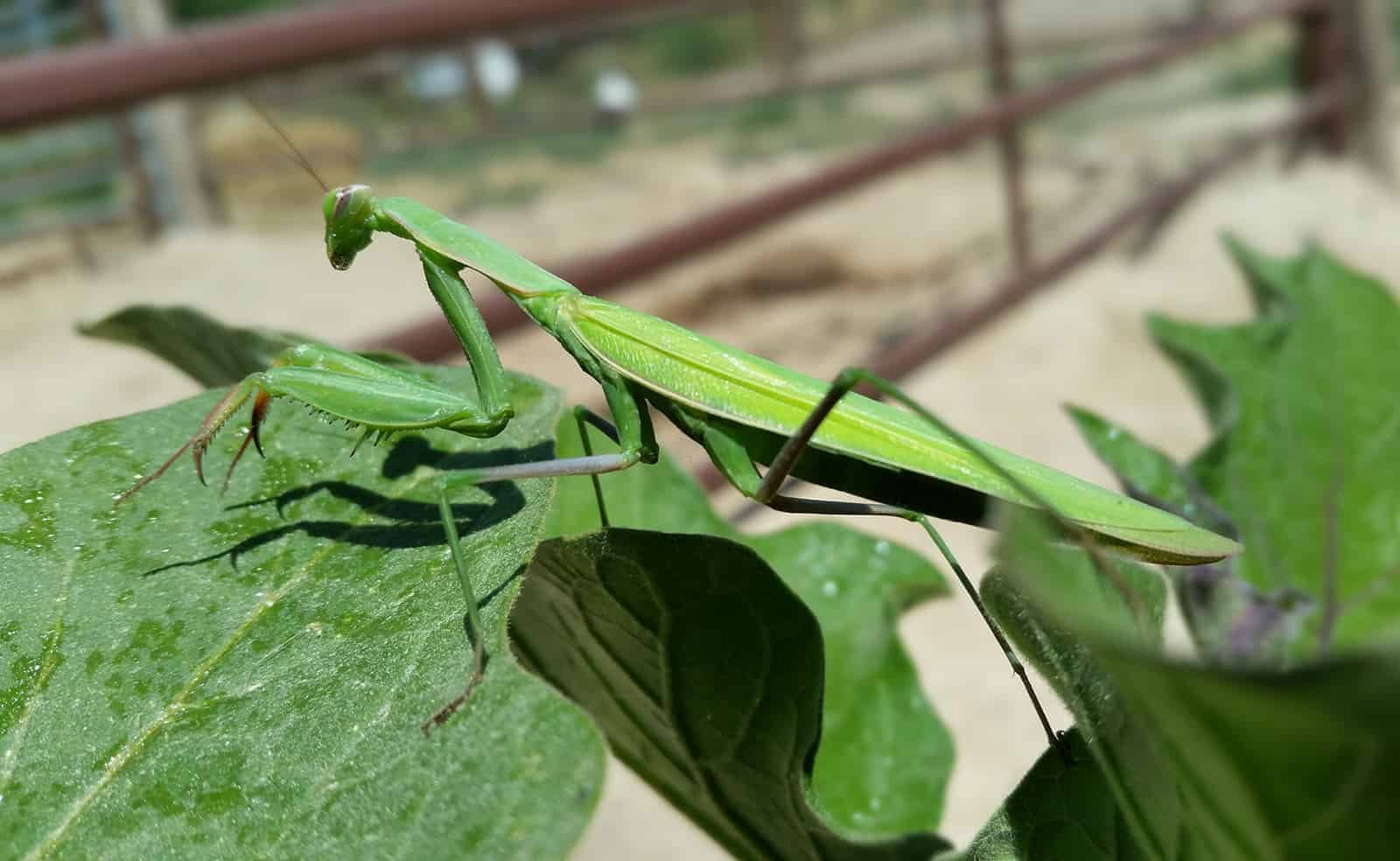
"Good" Bugs
Many “good bugs” prey on mosquitoes, mosquito larvae, and other insect pests. Some good insect helpers to attract to your property include dragonflies, assassin bugs, and praying mantis to name a few. | Photo: Alayne Blickle
Share

The Horse: Your Guide To Equine Health Care is an equine publication providing the latest news and information on the health, care, welfare, and management of all equids.
Related Articles
Stay on top of the most recent Horse Health news with



